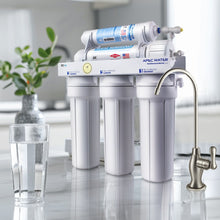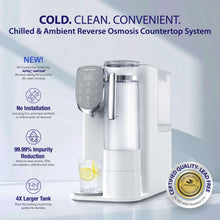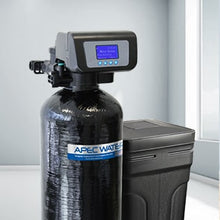Water purification vs Basic filtration
With the growth of industry comes pollution. With pollution comes contaminated water. Can the old basic filtration methods still produce the best drinking water? Or, do we need more intense purific...
pH of Water, What It Is and Why It Matters
Remember the time in 4th grade science class when you did that experiment with litmus paper and it turned red when you put it on a lemon and blue in soapy water? That was probably your first expe...
PH Values of Water Completely Explained
Remember the time in 4th-grade science class when you did that experiment with litmus paper and it turned red when you put it on a lemon and blue in soapy water? That was probably your first experi...
The Pros and Cons of Minerals in the Water
What are Minerals? Minerals are naturally occurring inorganic compounds that are essential for maintaining the overall health and well-being of living organisms. These compounds can be found in man...
Like heavy metal? Think again. We’re not talking Ozzy or music here, but the heavy metals scientifically which can be very harmful to your health if found in your drinking water. This joke is bad, ...
Hard Water vs Soft Water: Home and Health Benefits
Hard water... is water that contains an appreciable quantity of dissolved minerals (like calcium and magnesium). Soft water... is treated water in which the only ion is sodium. What is Hard Water?...
The Debate Over Adding Fluoride in Our Water
How do you think about having fluoride in your water? It is good for the health of your teeth, but not necessarily for that of your body…The debate over the positives and negatives of the additio...
Different Water Filtration Methods Explained
Distillation Distillation is probably the oldest method of water purification. Water is first heated to boiling. Then the water vapor rises to a condenser where cooling water lowers the temperature...
Water Purification Technologies - Ultraviolet (UV) Radiation
Ultraviolet radiation has widely been used as a germicidal treatment for water. Mercury low pressure lamps generating 254 nm UV light are an effective means of sanitizing water. The adsorption of...
Water Purification Technologies - Ultrafiltration
What is Ultrafiltration? Ultrafiltration (UF) is a water filtration process that uses a tough, thin, selectively permeable permeable membrane to remove particles and contaminants from water. The pr...
Water Purification Technologies - Reverse Osmosis
Reverse osmosis (RO) is the most economical method of removing 90% to 99% of all contaminants. The pore structure of RO membranes is much tighter than UF membranes. RO membranes are capable of reje...
Water Purification Technologies - Pulling It All Together
Water Purification Systems Because each purification technology removes a specific type of contaminant, none can be relied upon to remove all contaminants to the levels required for critical appli...
Your Guide to Ion Exchange Water Filters
The ion exchange filtration is one of the most common water filtration methods. In this article, we’ll discuss what ion exchange water filters are, how they work, what they remove, and their adva...
Water Purification Technologies - Microporous Basic Filtration
There are three types of microporous filtration: depth, screen and surface. Depth filters are matted fibers or materials compressed to form a matrix that retains particles by random adsorption or...
Water Purification Technologies Overview - Water Distillation
Distillation is probably the oldest method of water purification. Water is first heated to boiling. The water vapor rises to a condenser where cooling water lowers the temperature so the vapor is...



